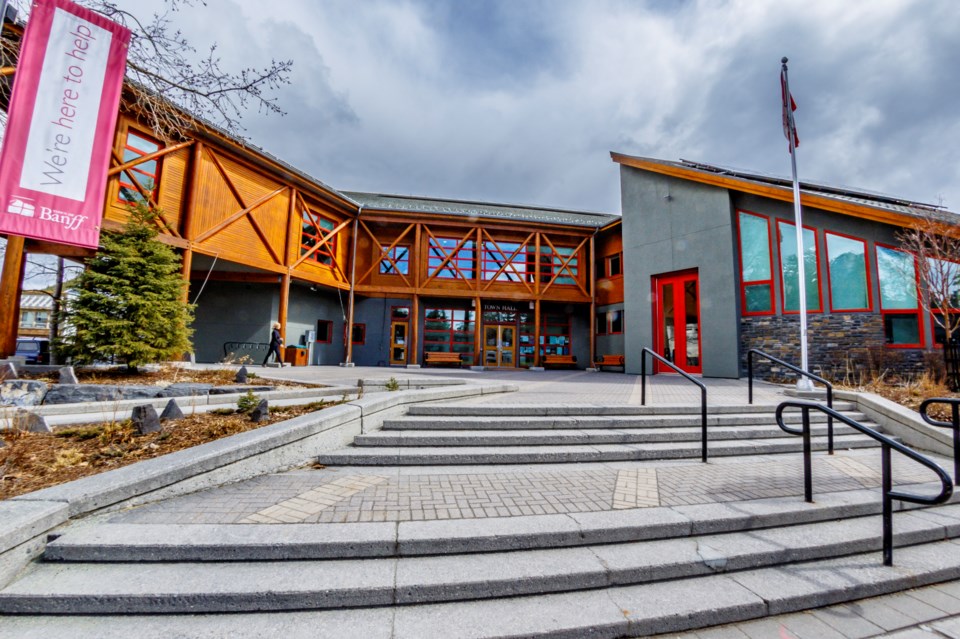BANFF – A plan is in the works to research legislative land use tools to help save some of Banff’s dwindling heritage properties from demolition.
Council has agreed to spend $30,000 of an $85,000 administration pitch next year to be able to move forward investigating land use bylaw amendments related to district regulations, general regulations, specific-use regulations, approving authorities and variances – a tactic in the heritage resource action plan.
Town of Banff officials say the land use bylaw includes regulations for development such as setbacks, density, height, parking, projections, land uses, home occupations and bed and breakfast homes and inns, and others.
"This tactic is about adjusting the regulations for development on heritage properties, to enable property owners to pursue development while maintaining a heritage building on site," said Darren Enns, director of planning and environment for the Town of Banff.
"An example could include density bonusing when a heritage building is retained," he said.
Mayor Corrie DiManno said she sees this land use bylaw work as foundational to moving forward with the heritage resource action plan, while other proposed 2025 heritage preservation tactics can wait a little longer as council grapples with a tight budget.
“We really are in a race against the clock to try and retain our heritage properties and we know that the community at large has a soft spot for our built heritage and we know these assets are cherished and they help to maintain our mountain charm," she said.
“We just need to act with a sense of urgency because once a heritage home is gone it’s lost forever.”
Council also gave their blessing for $15,000 in 2025 and $30,000 in each of 2026 and 2027 for a full-time heritage planner intern to help with the workload, including research on the land use bylaw amendments for preserving heritage, to bring the gap in some federal grant funding for the position.
Administration’s spending ask to move on other tactics in the council-approved heritage resource action plan included $25,000 to explore a program design for purchasing heritage properties, $10,000 for a heritage governance review and $20,000 to promote heritage and share conservation stories.
However, most of council voted against this. No funding decisions made during service review are final until council considers the budget on Jan. 6.
“With apologies to the heritage community, I know you’ve worked so, so hard and you’re looking for support,” said Coun. Barb Pelham at a Dec. 11 governance and finance committee meeting.
“I am really trying to keep our budget dialed to needs and not wants."
Over the last seven years, several properties on Banff’s municipal heritage inventory have been demolished, including the Kidney House and McKay Residence, both on Muskrat Street, Barrie Boarding House on Banff Avenue, and Margaret Greenham Residence on Caribou Street, among others.
For the last 25 years, the only two tactics for heritage preservation were a grant in lieu of taxes and a grant for refurbishment of properties in exchange for designation as a municipal historic resource.
“We know that those two tactics have been very little used and as a result we’ve preserved few heritage resources and we lose heritage resources as a result,” Enns said.
Coun. Olver also voiced strong support for moving ahead with some tactics, noting it took several years to develop a heritage master plan.
“In that time we lost a number of properties and the community was very vocal about that and upset about that,” she said.
“I am really pleased that when we do master plans that we don’t let them sit on the shelf collecting dust but that we actually use them.”
Other tactics being looked at as part of the review are related to development approval authorities and variances.
Currently, the approving authority for development permit applications varies, depending on the application type. Some development permits are decided on by Municipal Planning Commission (MPC), whereas others are approved administratively.
"We heard from heritage building owners that longer timelines associated with MPC can cause uncertainty and adds risk to their application," Enns said. "In certain cases, an administrative approval may be more appropriate to make decisions on development permit applications for heritage properties."
As for variances, a development permit may be approved that does not comply with the regulations of the Land Use Bylaw only if the variance test is met.
"As heritage buildings often constrain the sites they’re on, and/or the development may already have been constructed before the current land use bylaw was in force, it is often difficult to comply with the land use bylaw," Enns said.
"For this reason and to encourage heritage conservation, the variance test could be adjusted to specifically benefit heritage properties to a greater degree."




